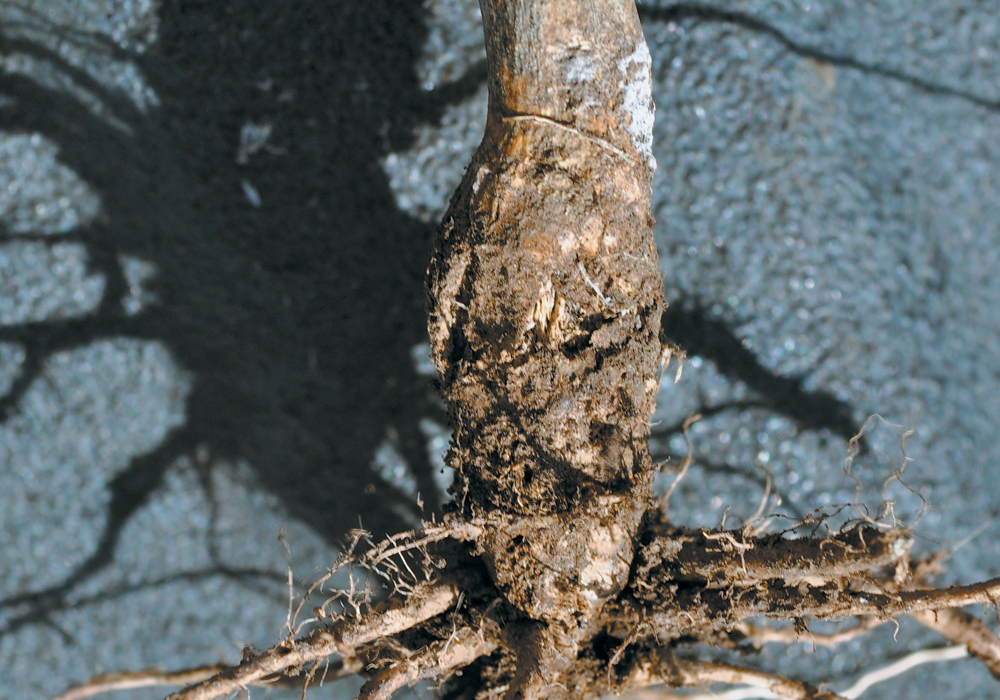Work continues on a fungicidal treatment for the canola disease, and commercialization is a possibility for 2020
A fungicide seed treatment that could reduce the incidence and severity of blackleg on canola may be on the market in 2020.
Gary Peng, an Agriculture Canada plant pathologist in Saskatoon, has been testing the fungicidal seed treatment in the laboratory and in the field.
Results are promising and Peng believes it could be a powerful tool for controlling early season infections of blackleg, a fungal disease that causes major yield losses and occurs in all canola-growing regions of Canada.
“In my mind, it should be quite important,” said Peng, who spoke at the Manitoba Agronomists Conference, held mid-December in Winnipeg.
Read Also

Canadian Food Inspection Agency red tape changes a first step: agriculture
Farm groups say they’re happy to see action on Canada’s federal regulatory red tape, but there’s still a lot of streamlining left to be done
Peng didn’t reveal the name of the company developing the seed treatment fungicide. However, the product could be on the market in short order because it is already registered and being used on another crop in Canada. The label must be extended for use on canola — a much simpler process than registering a new fungicide.
“They (the company) are pushing me, right now, to (provide) this year’s data for the rate to be applied,” Peng said. “That’s (what) the PMRA (Pest Management Regulatory Agency) is asking for (application rate data).”
At the meeting in Winnipeg, Peng shared results from some of his 2018 field trials.
In Brandon, he planted a canola variety with genetic resistance to blackleg and then planted the same variety, but with the fungicide on the seed at two different application rates.
- The incidence, or percentage of infected plants, on the R-rated variety was 31.5 percent.
- The R-rated variety and the lower rate of fungicidal seed treatment had an incidence of 20 percent.
- The R-rated variety and higher rate of fungicide had an incidence of 14.5 percent.
The fungicidal seed treatment also reduced the disease severity in infected plants.
The results are encouraging because blackleg has been on the rise in Western Canada. A decade ago, the incidence level in Manitoba was about five percent and below one percent in Alberta and Saskatchewan.
In recent years, it’s been around 10 to 20 percent in Alberta and Manitoba, and about eight percent in Saskatchewan.
Researchers don’t fully understand why the disease is more prevalent, but tight canola rotations are a factor. The pathogen persists on canola stubble and growing the oilseed every year or every second year means more blackleg is available to cause infections. As well, the disease is evolving and new strains of blackleg are overcoming the genetic resistance.
Having a fungicidal seed treatment is preferable to spraying a fungicide because a blackleg infection at the early growth stages causes much more damage to a canola plant.
“We have a much shorter crop season, and early infection is the key (for blackleg development),” Peng said. “In terms of chemical control, it will be more cost effective.”
Many canola growers in Australia already use a fungicidal seed treatment to control blackleg, a Bayer product called fluquinconazole.
“Plants that have been treated with Jockey Stayer (brand name) show reduced leaf infection, reduced plant lodging, increased plant survival and increased yield,” Bayer says in a promotional document.
The fungicide being tested in Canada is different from fluquinconazole.
“We compared this … active ingredient against that (fluquinconazole),” Peng said. “It’s more effective, at least at the lab level…. This one is more systemic.”
Peng hopes to submit his data to the interested company by the end of 2018.
If all goes according to plan, he expects the company will launch the fungicide seed treatment in 2019 and that it will be commercially available for canola growers in 2020.
















